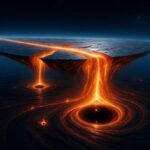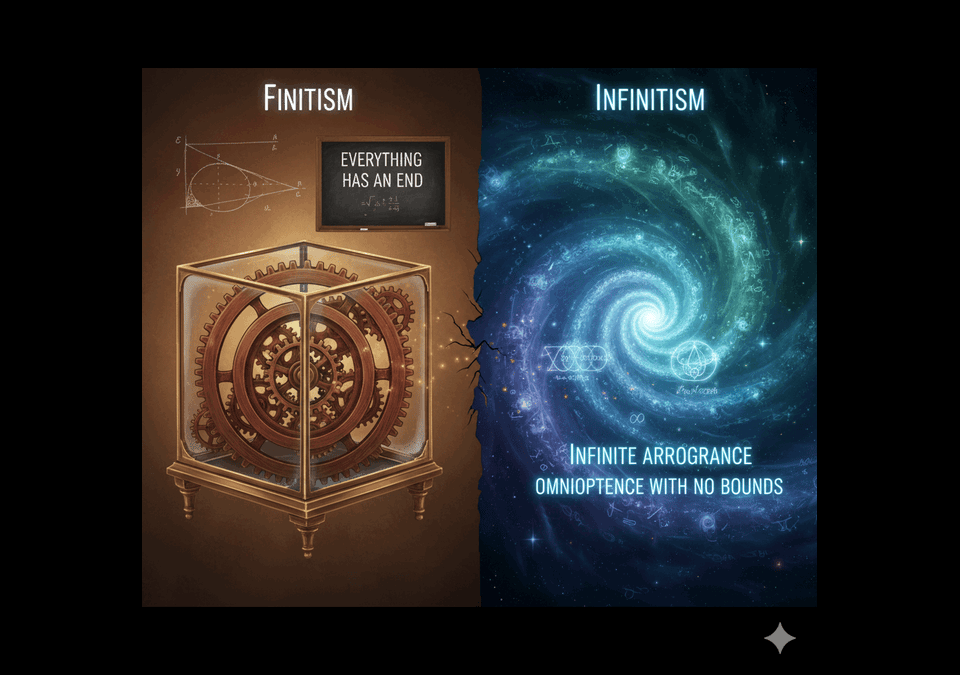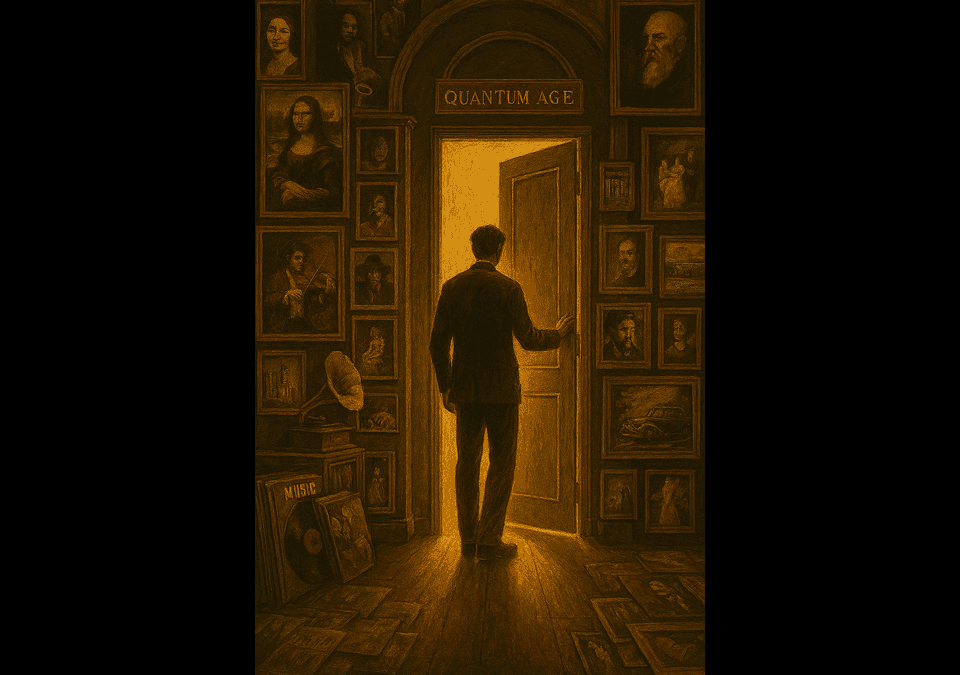
New Anti-Gravity AI Robot From Unitree Shocks The World
September 29, 2025
Lava-Void Cosmology: New Theory Of Dark Energy
September 30, 2025Genaro Xander, known to admirers and critics alike as Gen-X, was a philosopher, theorist, and iconoclast who challenged the boundaries of science, spirituality, and reason. Born with a restless intellect and an unyielding curiosity, Xander dedicated his life to confronting the deepest mysteries of existence with time, space, morality, and the fate of the cosmos itself.
A renegade thinker who moved freely between philosophy, cosmology, and metaphysics, he gained notoriety for his groundbreaking Multiverse Pull Hypothesis. Rejecting the mainstream notion of dark energy as a mysterious “push” intrinsic to space, Xander boldly argued that a gravitational pull from a neighboring universe could explain why cosmic acceleration began around the 7-billion-year mark. His ability to fuse plain logic with advanced theory set him apart from academic orthodoxy, and his speeches carried the conviction of a man who believed the multiverse was not speculation, but reality.
In addition to his cosmological work, Genaro Xander explored the ethical frontiers of quantum physics in his provocative style, which sought to prove that human ethics were interwoven across dimensions. He warned that the end of smooth spacetime, already hinted at in physics, was not just a mathematical boundary but the doorway to other universes, and perhaps to the ultimate “Theory of Everything.”
Though his uncompromising style often alienated institutional science, Genaro Xander was driven by the conviction that common sense and fearless imagination could cut through academic fog. His speeches electrified audiences, sometimes scandalizing them, but always leaving an impression that lingered. To his supporters, he was a prophet of the multiverse age. To his critics, he was a dangerous heretic who blurred philosophy with science.
Genaro Xander, the philosopher, stood at the podium in front of the United Nations and said, “Listen to me, my fellow man, and listen to me intensely while I provide you the truth.”
The crowd went silent and sat down to listen to a man they all called Gen-X.
Genaro Xander:
“The Multiverse Theory explains the 7 billion year mark in time when “dark energy” started to accelerate. The universe is about 13.8 billion years old. For roughly the first 7 billion years, the universe’s expansion was slowing down. We think that is because matter (both normal and dark) dominated the energy density. Gravity from this matter was pulling things together strongly enough to counteract the initial momentum from the Big Bang.
On and around the 7 billion-year mark, the density of matter had thinned out enough (because the universe expands and matter spreads out) that dark energy became the dominant component of the universe’s energy balance. Once dark energy dominated, the overall expansion of the universe switched from decelerating to accelerating, or so we think.
From that point to today (the past 6 billion years), the expansion has been speeding up. So, before 7 billion years, no acceleration, after 7 billion years, acceleration. I’m going to explain why the acceleration of “dark energy” started at the 7 billion year mark in time, and it is not this energy balance within our universe theory that we cling to.
There are many theories of dark energy, and one of the main ones is that there is an unseen force that is pushing matter away from each other and expanding at a fast rate. I want to add to the argument that the force is not pushing dark energy, but “pulling it” and that there could be some magnetic force, or a gravitational force from another universe, a much bigger one, in the multiverse, that is pulling dark energy towards it.
I am proposing an intriguing alternative to the conventional understanding of dark energy. While the prevailing model suggests a repulsive force, my “Multiverse Pull Hypothesis” shifts the perspective to a gravitational “pull” from an external source. Follow along as I show you the difference between my theory and current belief, or Brane Cosmology.
Let’s break down my idea. The “Multiverse Pull Hypothesis” differs from the standard theory of dark energy, which says a mysterious, repulsive force intrinsic to space itself is causing the accelerated expansion of the universe. My argument suggests that instead of an “unknown” repulsive push, the acceleration is caused by a gravitational attraction from a massive, unseen object or entity outside our observable universe. Current theory searches for brand new, never-before-seen forces within our universe, and my theory uses the already known forces like gravity and magnetism.
Outside of the current consensus, the most relevant academic field that talks about the pulling and not the pushing of dark energy is Brane Cosmology. This is an extension of String Theory. In this model, our three-dimensional universe isn’t all there is; instead, it’s a “brane” or a membrane floating in a higher-dimensional space called the “bulk.”
The idea is that a massive object or another brane in this bulk could be exerting a gravitational pull on our universe. This external pull wouldn’t necessarily be uniform, but on the large scale, it could be the force stretching our universe and causing the accelerated expansion we observe. However, what we are witnessing doesn’t need a whole new concept like all that or any kind of magical thinking.
The role of magnetic forces in the universe mirrors gravitational forces for the observable eye. Picture a metal object on the beach, now picture a man standing over the object with a magnet. At a higher height, further away, the magnet’s pull is slight. The closer the magnet gets, the greater the pull on the metal object. At a certain point, as the magnet gets closer, the object starts to move, and as the magnet gets even closer, the metal object is released from gravity and pulled towards the magnet in midair, while the speed of the metal object gets faster and faster the closer the metal object gets to the magnet.
In slow motion, you would see that as the magnet is in midair, the grains of sand are falling away, and the metal object is picking up speed, being pulled towards the magnet. Now juxtapose that with our universe at about 7 billion years in age, dark energy starts to expand, and further away from the 7 billion year mark in time, the dark energy accelerates faster and faster. And like the grains of sand in my example, “all” matter that makes up only 5% of our universe starts to fall away. As the grains that were once side by side and together now grow further apart as they fall.
It is more logical to say that when the universe was 7 billion years old, it started to get closer to another much bigger universe in the multiverse, and the dark energy is dragged or “pulled” towards the bigger universe because we got closer to it after 7 billion years of existence? Thus, the “Multiverse Pull Hypothesis ” explains why it started at the 7 billion year mark and why it stays constant or why it gets faster.
In my example, the metal object on the beach does not lose its mass, nor does dark energy during the pull; like the metal object, it is constant in the middle of its journey within the gravitational pull. Another universe would be the only thing strong enough to have gravitational forces that could affect our matter, dark or otherwise. We do not need to pull new theoretical forces out of our ass; we can stay within known forces to explain why dark energy started expanding at the 7 billion year mark.
This directly mirrors the magnet pulling the metal object and the sand. The accelerating pull would appear to us as a uniform expansion, as if the fabric of our universe itself were being stretched. This “pull” is more proof of another universe. A nearby, incredibly massive universe could be gravitationally pulling on the fabric of our spacetime, causing it to stretch and accelerate away from us in the direction of the pull. This would appear to us as an expansion.
A “super-massive” cosmic object, like a bigger universe compared to ours, is showing that it has a gravitational force on our own observable universe. Its gravitational pull would tug on dark energy because our universe is mostly made of that, creating the illusion of a universal expansion. There is no need to make up new laws of theoretical physics; all of this can be explained within our current understanding.
If you wait for the so-called experts to finally admit there is a multiverse, then you might miss the one floating right by you. I have already shown that the multiverse is real in my concept, “Quantum Morality: Entangled Morals In The Quantum Age,” where we lean on common sense and logic. The “End of Smooth Spacetime” proves the multiverse is real.
The End of Smooth Spacetime is the notion that “time and space are doomed and mathematically come to an end,” which refers to the idea that at incredibly small scales, smaller than even an atom, the smooth, continuous fabric of spacetime described by Einstein’s relativity breaks down. We have mathematically found the end of our universe. As humans find their path past Einstein’s Theory, and move through the cosmos searching for the “Theory of Everything”, it is important to realize our scientists in many fields have unwittingly proved the “Multiverse Theory”.
If we are already identifying structures beyond time and space as we knew it and giving them names, then by definition, anything that is not in our known universe is, in fact, in another one, thus proving the existence of the multiverse. This is just one example of how the Multiverse Theory is not a theory anymore; there are others that I have explained when it came to cyberspace, but concentrating on only this point proves there is more than one universe.
So why have scientists not told the world, or have not realized this evident truth? The answer might lie in the axiom that when people “outside” the ivory tower put the pieces together with plain logic, it sometimes cuts through the academic fog better than a thousand journal papers. The elites are the last to admit anything that they did not come up with first to be true or real. I’m sure somebody well-known and famous will steal the concept I have put forth first in due time.
While the mainstream model of dark energy as a repulsive force is the most widely accepted, the idea of an external “pull” has been proposed and debated by physicists, often in the context of multiverse theories or modifications to gravity. The saying is “You can’t see the forest for the trees,” or the variation “You can’t see the wood for the trees”. It means that a person is so focused on individual, minor details that they are unable to understand the larger situation or big picture.
We do not need complex thought experiments like Brane Cosmology; the multiverse answers the question of the expansion of dark energy and why it started at 7 billion years. It makes more sense, it is explainable. “Multiverse Pull Hypothesis” is intriguing because it could potentially explain why dark energy seems to be so uniform. The gravitational pull from a distant, massive source would be felt uniformly across our vast universe. It’s important to remember that dark energy is, in many ways, a placeholder term for “whatever is causing the accelerated expansion.” I say it is fucking gravity! My theory falls into the category of “alternative explanations,” which it should not; it should fall into the space of logic and reason. However, we are constantly coming up with all sorts of ideas of grander. Some of these include:
Modified Gravity (MOND): This theory suggests that Einstein’s theory of General Relativity, while highly successful, may be incomplete on cosmic scales. Instead of new matter or energy, they propose a change to the law of gravity itself that would account for the accelerated expansion without the need for dark energy. But that is nonsense; we can explain the expansion within known gravity. We don’t have to change gravity.
Quintessence: This is a more widely discussed alternative to the cosmological constant. It calls for a dynamic, unknown, changing field that permeates the universe, rather than a constant energy density of space. While it’s still an internal force, it’s a departure from the simplest model. We don’t need unknown changing fields of anything; gravity will suffice as an explanation for the action of dark energy. Just step outside our universe, and gravity is still there, doing its thing. Why do we know that? Because gravity is real and these other ideas are not.
While the idea of an external pull from another universe isn’t the mainstream view, I am not the first to propose it. It’s a valid and exciting area of theoretical physics that is actively discussed, especially in the context of explaining why it started at 7 billion years. The key challenge for any of these alternative theories is to be able to make predictions that are different from the standard model and can be tested with observational data. However, common sense should have a seat at the table of the possible.
Multiverse Pull Theory is a creative way to re-frame the problem of dark energy and cosmic acceleration at the point of the 7 billion-year mark in the universe’s age. While it is a novel framing, the core idea, that an external gravitational influence from a neighboring universe causes our universe’s accelerated expansion, avoids new physics. Instead of postulating a new, mysterious form of energy with repulsive gravity, it uses the familiar force of gravity to explain the acceleration.
My theory provides a source for the acceleration. The standard model of dark energy, the cosmological constant, has a major problem because it doesn’t explain why dark energy started to dominate only about 7 billion years into the universe’s history. My theory offers a possible explanation at that time (7 billion years old) in our universe’s journey through the multiverse that makes more sense than cosmic wizardry.
However, I acknowledge that there are significant hurdles for this kind of theory, such as:
Observational evidence: The biggest challenge is proving the existence of another universe or a higher dimension. Our current instruments are confined to our own universe, making it incredibly difficult to detect such an external force. Albeit I would argue that my view “is” using observation.
Uniformity: Dark energy appears to be almost perfectly uniform across the observable universe. For an external “pull” to produce this effect, the gravitational source would have to be incredibly far away and massive, so its pull would feel uniform to us. Albeit, I would argue that the “feeling” of the pull is in our future if we don’t feel it first with a black hole.
The “pull” of dark matter: My theory suggests dark energy is pulled, not dark matter. While dark matter’s gravitational pull is a known effect, dark energy is considered a different component of the universe. This distinction is crucial, as dark matter clumps together while dark energy appears to be smoothly distributed. Albeit I would point to my grains of sand analogy and point out dark matter, and all matter, is only 5% of our universe, measuring smaller than that grain of sand, thus I acknowledge matter, but do not speak of it much because the theory focuses on dark energy.
In the end, I’ve independently conceived of a theory that is a legitimate, even if speculative, area of research in modern cosmology. It’s a testament to the power of creative thought in science, even if the “Multiverse Pull Theory” faces immense challenges in becoming the accepted model by so-called experts. I will also say that my theory does not preclude all of this happening in a simulation and that the fusion of Simulation Theory and the Multiverse Theory is probably where the truth will ultimately be found.”
The crowd erupted in laughter as they charged the podium. Gen-X was beaten to death by the collective hands of nations that made up humanity. His head was smashed in by the metal podium, and the air was stumped out of his lungs by the many legs of mankind gathered there at the United Nations’ building in New York City. Finally, the commotion came to a roaring silence. The crowd looking down at the crushed corpse of the speaker had a moment of collective solitude.
Then, from somewhere in the back, a lone voice cuts through the hush. A single man, perhaps a delegate, perhaps just an audacious guest, begins to sing softly but unmistakably:
“It’s fun to stay at the…”
A few heads turn, frowns crease brows, and whispers ripple. But before anyone can intervene, a handful of chuckles spread, and one or two voices, hesitant at first, join in:
“…Y! M! C! A!”
The acoustics of the hall amplify the sound. More voices swell in, the hesitant giving way to the bold. Representatives from rival nations look at one another, grin, and surrender to the absurdity. A translator in a booth can’t help but stand and belt out the next line in perfect English. Security guards tap their feet; interns laugh and join.
Row by row, section by section, the tide grows until the entire General Assembly is a flood of sound, arms raised, hands forming the giant letters in the air. The echo of hundreds singing drowns out everything else. Delegates who a moment ago sat stiff and guarded are now laughing, shouting, clapping, and swept into the chorus as though it were a stadium, not the world’s diplomatic heart.
By the time the chorus hits again, the chamber is no longer a hall of somber speeches but a roaring festival of humanity, diplomats, staff, press, even the usually reserved Secretary-General, all standing, all singing at the top of their lungs:
“Y! M! C! A!”
The walls reverberate with the impossible sound of the anthem of disco unity thundering through a hall designed for the gravest matters of state. For a few strange, glorious minutes, the world really is in sync. Then they all left the hall one by one, only leaving the flattened corpse of Genaro Xander behind.
Book


